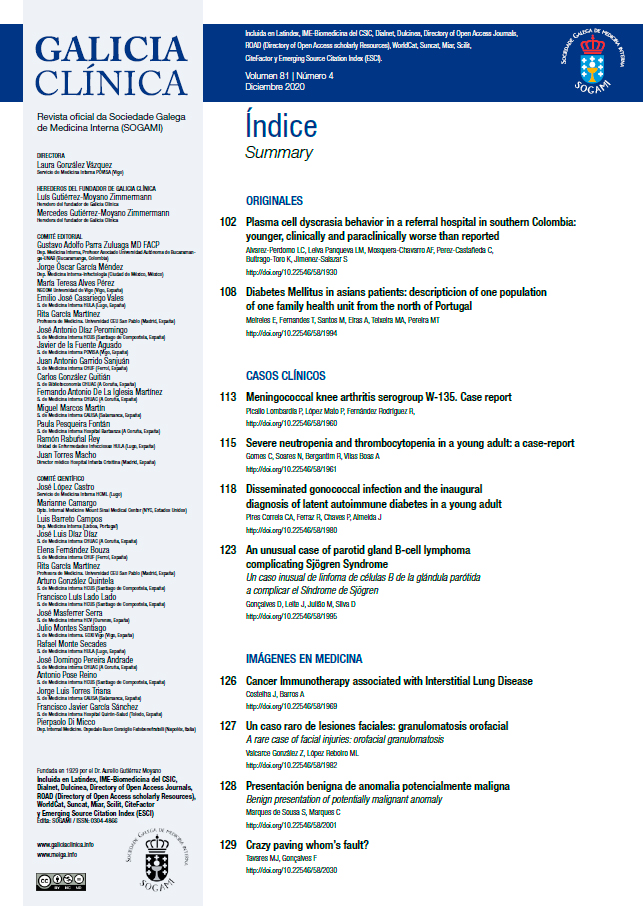Abstract
Introduction: Asian Countries contribute more than 55% to the world’s diabetic population. Compared with the European population, Asians develop diabetes with lower thresholds of body mass index and abdominal perimeter and at earlier ages.
Material and Methods: An observational, cross-sectional study was conducted based on a population of patients with diabetes of Asian origin enrolled in the USF Rainha D. Amélia. These patients were selected through the MIM@UF® program using the codes of the international primary health classification: T90 and T89.
Results: The population obtained consisted of 20 patients with Type 2 Diabetes, originary in Asian countries. At diagnosis the patients had a mean of 42.6 years, and in 30% (n = 6) the diagnosis was established before the age of 40 years. The mean duration of diabetes was 6.75 years. Pancreatic anti-islet antibodies were determined in 10 users, all with negative results, as well as the C-peptide values, which were within the normal range. There were statistically significant differences for total and LDL cholesterol in patients with glycated hemoglobin> 7% when compared to the group with lower values.
Discussion: Asian populations have a substantial risk of developing diabetes compared to other populations. In addition they develop the disease earlier and with lower body mass index. One possible reason for this difference is that, compared to Caucasians, Asians have more visceral adiposity, which contributes to lipotoxicity, insulin resistance and diabetes development.
© 2020 Galicia Clínica.
Complete article | Pdf article


